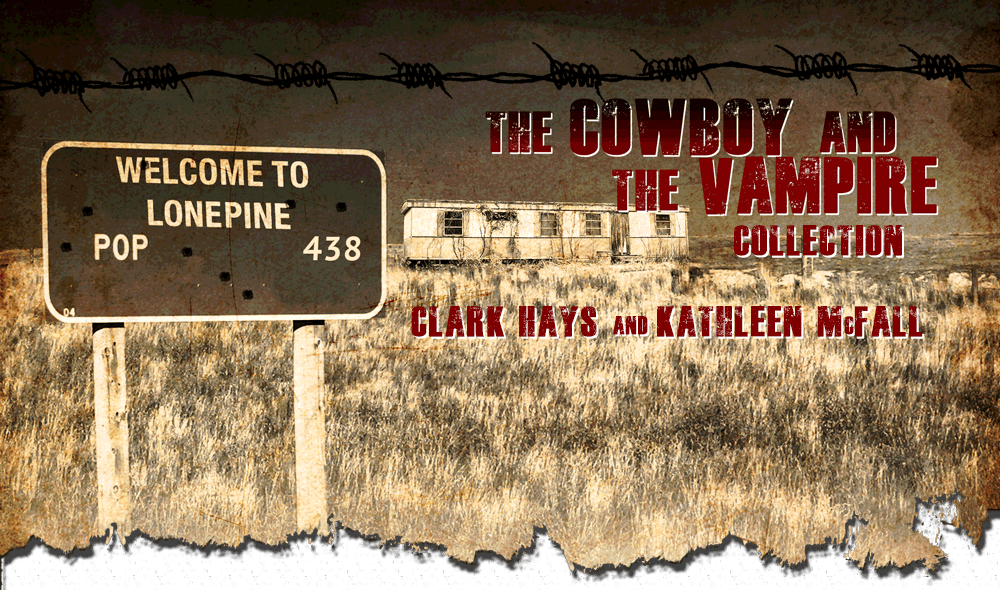Home > Soapbox > Hearts of darkness: The vampire as voyage of discovery
Hearts of darkness: The vampire as voyage of discovery
 Undead fiction, like The Cowboy and Vampire Thriller Series, help readers discover worlds beyond the reach of maps.
Undead fiction, like The Cowboy and Vampire Thriller Series, help readers discover worlds beyond the reach of maps.
Everybody knows vampire fiction is dead. (Actually, undead.) There’s nothing original left to write about the undead. Every interesting lens vampires provide to examine social trends — the morally draining effects of capitalism, our uneasy relationship with mortality, our simmering mistrust of our sexual natures — has been done to death. There is nothing new under the sun, or hiding from the sun, and no possible way to breathe life back into the creatures of the night.
Or is there?
The thing about vampires is that since Poliodori first set pen to paper, since Stoker crystallized the archetype, they have refused to go away. Despite pronouncements from pundits and the best efforts of clumsy writers enchanted with clichés and stereotypes, vampires endure. And it’s not only because they represent the dark side of human behavior — we do an admirable job in fiction and in reality of showing the worst of ourselves without them — but because they represent that part of human nature that seeks out new places, that drives us to explore.
The glorious madness, the single-minded obsession that sends cheerful fellows to the green and venomous heart of the Amazon, to the oxygen-choked tip of Mount Everest, to the cold and silent depths of the ocean, to the ice-choked emptiness of the North Pole — the desire to explore, to learn, to understand — is fundamental to being human. That driving force is as much our legacy as the cruelty and sexual fetishes we layer onto our undead villains. Conveniently, our kind has developed an archetype that allows us to continually travel beyond the edge of the maps we rely on to guide us through our own experience: vampires.
The undead are both the vehicle and the journey for traveling to new frontiers of mortality and immortality, sexual freedom and perversion, kindness and cruelty, strength and power. They are the maps we draw to find out more about ourselves and, even in occasionally clumsy hands, the stories we tell about vampires tell the stories about us.
This often-hidden theme of discovery and exploration is brought to the front in our books, The Cowboy and Vampire Thriller Series.
There are some obvious themes of exploration in all the books as Tucker, the down-on-his luck cowboy, and Lizzie, the unwilling queen of the vampires, travel together into a new realm — love — and discover much about themselves and each other as the blaze a new trail. There’s also much to discover as two very different worlds collide. Tucker, comfortable in his rural life, is thrust into the middle of the urban world and the refined sensibilities of highly urban, and sophisticated vampires. And even before she becomes a vampire, Lizzie had to discover what makes LonePine, Wyoming, population 438, so special to the man she loves.
But there are even more powerful, unique themes of exploration at the heart of each standalone book.
In The Cowboy and the Vampire, book one of the series, religion is the new frontier and we take readers to the edges of faith and belief — and beyond. Lizzie and Tucker are thrust into a world of vampires who practice a mirror-image Christianity, a dark religion dating back 2,000 years in which evil is good, and kindness is weakness. The mad, tyrannical leader of the most powerful vampire faction uses this religion to batter his enemies and plots to hasten and apocalyptic end of times — at least for humans.
In Blood and Whiskey, book two, the uncharted territory is the political system and long-standing hostilities between vampire species. In an unexpected power vacuum, Lizzie has to balance the needs of the anxious ruling elite of the undead world against the seething hostility of masses of long-oppressed vampires, all while trying to protect humans from a danger they don’t even know exist. The book explores how vampires and humans choose to organize themselves socially and culturally. It’s a long, dark journey through a bloodthirsty monarchy, political power and the plight of disenfranchised.
In our soon-to-be-released third book, Rough Trails and Shallow Graves (working title), we explore the spiritual dimension. Our vampires die, completely, every dawn which means they truly experience and understand what happens after death. Their souls, their selves, are liberated in a daily Near Death Experience and they travel to the Meta, a giant energy field that contains and sustains all life. We use the experience to explore the afterlife and an emerging external spiritual dimension with implications for human existence.
Of course, the books are also loaded with all the things that keep the vampire myth popular — blood-sucking passion and perversions and violence, as well as comedy, action and romance, and a sustained exploration of the modern American West.
As long as there is something in us that causes us to look beyond the moment, beyond our selves and beyond our immediate environment, there will always be vampires. And because of that, because we never stop searching, never stop seeking, never stop redrawing our maps, the undead are here to stay.
